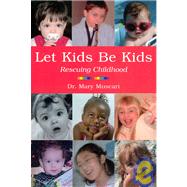 Tips on spotting the warning signs of cyberbullying and how to help your child deal with the issue, from Mary Muscari, associate professor at Binghamton University, State University of New York, and author of
Tips on spotting the warning signs of cyberbullying and how to help your child deal with the issue, from Mary Muscari, associate professor at Binghamton University, State University of New York, and author of
Not My Kid: 21 Steps for Raising a Nonviolent Child and Let Kids be Kids:Rescuing Childhood. Cyberbullying, the sending or posting of harmful or cruel text or images, using the Internet or other digital communicationdevices, affects almost half of today’s teens. Cyberbullying messagesand images may be posted on personal, web sites or blogs, ortransmitted via email, discussion groups,  chat, Instant Messenger (IM),text and smart phones.
May 2008
Study shows time apart from a parent predicts disadvantages in the classroom
In the wake of divorce, illness, violence and other problems that can unsettle homes, countless young children are liable to experience temporary separations from one or both parents before packing their knapsack for kindergarten. Published in the May/June issue of Ambulatory Pediatrics, a new, community-wide study from Rochester, New York, warns that such kids are at increased risk for learning difficulties and that these separations are good predictors of which children may require special educational interventions to succeed. [continue reading…]
Neuroscientist and inventor Christopher deCharms demos an amazing new way to use fMRI to show brain activity while it is happening — thoughts, emotions, pain. (In other words, you can literally see how you feel.)
Why you should listen to him:
Neuroscientist Christopher deCharms is helping to develop a new kind of MRI that allows doctor and patient to look inside the brain in real time — to see visual representations of brain processes as they happen. With his company Omneuron, deCharms has developed technology they call rtfMRI, for “real-time functional MRI” — which is exactly what it sounds like. You move your arm, your brain lights up. You feel pain, your brain lights up.
How could we use the ability to see our brains in action? For a start, to help treat chronic pain with a kind of biofeedback; being able to visualize pain can help patients control it. And longer-term uses boggle the mind. Ours is the first generation, he believes, to be able to train and build our minds as systematically as a weightlifter builds a muscle. What will we do with this?
deCharms is also the author of the book Two
Source:TED
Â
Does value equal low price? Or does value equate to the benefits of that product or service for the price you pay? Let us know what you think?
Reading the BPS Research Digest this morning I came across this post which features the recent study published by Francesca Gino at Carnegie Mellon University.
Whether its political spin doctors or orange-skinned health gurus, there seems no shortage of people seeking to charge others good money for the benefit of their wisdom. Regardless of the quality of this advice, one thing is for sure: The fact that someone has paid for it, means it is more likely to be heeded.
That’s according to Francesca Gino at Carnegie Mellon University, whose new study shows that we’re more likely to use advice we’ve paid for than advice that’s free, even if there’s no difference in quality between the two sources.
Dozens of students were asked questions about American history and received small cash prizes for correct answers. The students were either given the option of receiving advice on the correct answers, or advice was imposed on them. Sometimes this advice was free; other times it was paid for out of the students’ winnings. Crucially, the advice always came from the same source – in the form of the answer that a student from a pilot session had given to the same question – so the quality of advice was held constant regardless of whether it was free or paid for.
Throughout the study, the participants took more account of advice they had paid for than advice they were given free, even though it was made clear to them that the advice was of the same quality. A final study showed the students took even more account of advice if it was made more expensive.
Gino said her findings could be explained by a phenomenon in decision-making theory known as the sunk cost fallacy. This is our desire to justify our past investments through our present and future behaviour – it’s why that expensive pair of shoes that you never wear is still cluttering up your cupboard. In the case of advice, it seems we feel compelled to use guidance we’ve paid for, so as to justify the expense. And perhaps it explains why expensive frauds can sometimes be so influential.
Source: BPS Research Digest, GINO, F. (2008). Do we listen to advice just because we paid for it? The impact of advice cost on its use. Organizational Behavior and Human Decision Processes DOI: 10.1016/j.obhdp.2008.03.001
